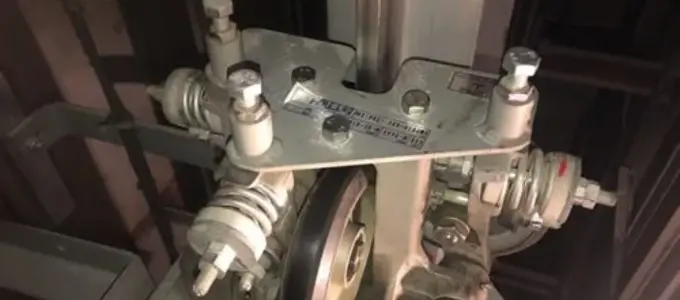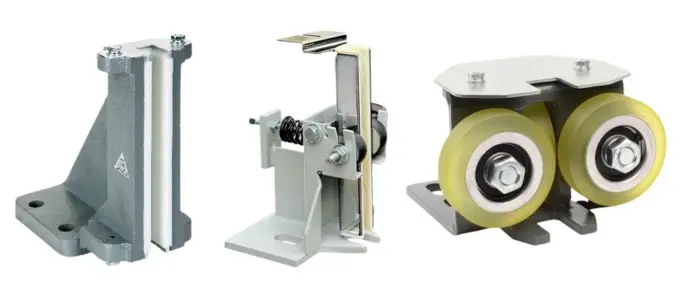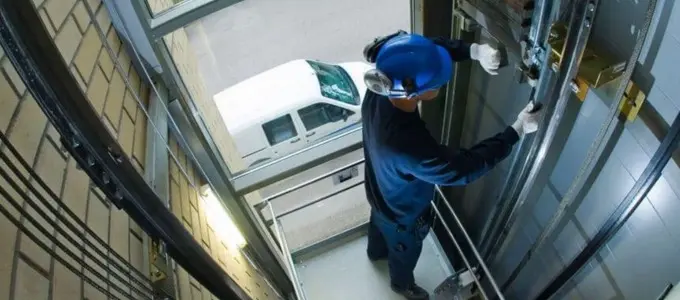Ever experienced a noisy, shaky elevator ride? The culprit might be something you’ve never considered: sliding guide shoes. These unassuming components are vital for smooth elevator operation, keeping the cabin stable as it moves up and down. Neglecting their maintenance can lead to poor ride quality, increased energy consumption, and even safety risks.
Sliding guide shoes are devices that guide the elevator cabin along its rails, preventing misalignment and ensuring a smooth ride. Excessive wear on these components can lead to vibrations, noise, and damage to other parts, ultimately impacting energy efficiency and passenger comfort. Let’s explore their role, maintenance tips, and why they’re so critical to elevator performance.
Sliding guide shoes are mounted on the elevator cabin and counterweight. Their purpose is to maintain alignment with the guide rails, allowing the elevator to move smoothly and prevent lateral or swinging motion.

These are simple, rigid devices made of materials like nylon or cast iron. They’re commonly used in low-speed, heavy-duty freight elevators due to their robust structure. However, they can cause vibrations in high-speed systems.
Equipped with springs or rubber components, these guide shoes absorb more vibrations, making them suitable for mid-speed passenger elevators.
These use rolling contact instead of sliding, significantly reducing friction and noise. They’re ideal for high-speed elevators, ensuring quieter and smoother operation.

Wear and tear on sliding guide shoes can cause a cascade of issues:
As guide shoes wear down, friction increases. This adds strain to the traction machine, raising energy consumption and operational costs.
Worn guide shoes lead to misalignment, causing vibrations, noise, and an uncomfortable ride.
Misaligned guide shoes can accelerate wear on guide rails, safety brakes, and hoist ropes, leading to costly repairs.
Shoe lining materials like nylon, cast iron, or hard plastic have varying levels of durability and friction resistance.
A well-lubricated guide rail minimizes friction, reducing wear on the shoe lining.
The weight of the elevator cabin impacts how much pressure the guide shoes exert on the rails. Higher loads result in faster wear.
Rough guide rail surfaces cause more friction, accelerating shoe wear.
At higher speeds, guide shoes experience increased friction and heat, leading to faster wear.

Proper maintenance ensures longer life for guide shoes and other elevator components:
Check the clearance between guide shoes and rails. Misaligned or excessively worn shoes should be adjusted or replaced.
Apply lubricant to reduce friction and prevent excessive wear. Avoid over-lubrication, which can attract dust.
Keep guide rails clean to minimize dirt and debris buildup, which accelerates wear.
Replace shoe linings as soon as wear is detected to prevent damage to guide rails and ensure smooth operation.
Neglecting guide shoe maintenance can result in:
Guide shoes should be inspected every 3–6 months as part of regular elevator maintenance.
In most cases, replacing the shoe lining or the entire guide shoe assembly is more effective than repairing it.
Roller guide shoes offer reduced friction and noise, making them ideal for high-speed elevators, while sliding guide shoes are cost-effective for low-speed systems.
Sliding guide shoes are small but crucial components that significantly impact elevator performance. Proper maintenance, including cleaning, lubrication, and timely replacement, can prevent costly repairs, improve ride quality, and enhance energy efficiency.
At Potensi, we provide top-quality sliding and roller guide shoes and other essential elevator parts. Whether you’re maintaining a low-speed freight elevator or a high-speed passenger system, we’ve got you covered. Contact us today to ensure your elevators operate smoothly and efficiently!
① Get 10% off on your first order.
② Get latest news about our promotion products.
③ Get our sales specialist VIP service 24/7.
④ Get access to our credit payment time.
WhatsApp us
